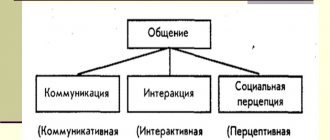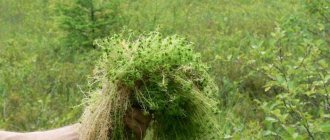Moss is the most interesting plant. This species does not have roots, leaves or flowers. So how does it reproduce and survive? It's all about controversy. Like mushrooms, mosses reproduce by spores. Since ancient times, people have used mosses to determine the cardinal directions. This plant is the best assistant for a lost tourist who wants to get out in the right direction. Yes, now there is a lot of technology that allows you to get out of the wilderness. But imagine a moment: your smartphone just ran out of charge. What to do?
Why does moss grow on trees on the north side?
Many will ask: why? There is only one answer - that’s how he needs it, that’s how nature intended it. Which side moss grows on trees is determined by the sun. The moon and sun have a great influence on the Earth and all organisms living on it. Leeches and crocodiles, algae and monkeys, even people are subject to the forces that emanate from the sun and moon, affecting life. This plant is no exception. It loves moisture very much. Without it, in dry areas, moss will not grow. And the sun also loves moisture. Under the influence of its rays, water evaporates, forming clouds, but by taking this water away from the plant, it threatens that the moss will simply die. Sadly. Therefore, the moss learned to hide from the sun and not give up its moisture to it. The earth, rotating under the rays of the sun, always protects its closed northern side from its rays. Therefore, those trees that grow separately from the forest are never illuminated by the sun's rays from the north side. So put away your discharged smartphone and focus on which side the moss grows on the trees.
Grow and tame moss
This type of plant grows only in shady places and due to spores. In order to bring your site to a state of “antiquity”, you will need to choose exactly those places that are not illuminated by the sun. On which side the moss grows on your site can be determined by the shadow of the house. From the side where the sun looks least often - the north. There will be an ideal place to plant a kind of moss garden.
Now you need to get some spores. Come to the forest, there is stronger moss, since there is practically no sunlight in the thicket. Look at which side the moss grows the most - it’s north, which means it has the strongest spores. Pick a piece of moss from a tree and bring it home. Place it in the sun, wait until it dries completely.
After the plant has completely dried, chop it and grind it. Mix the resulting powder with a glass of flour and a glass of skim milk (fat should be no more than half a percent). Add a couple of packets of dry (fast-acting) yeast and syrup to this mixture. The syrup is prepared from a quarter glass of sugar, the rest in the glass is water. For this consistency there should be no more than one and a half cups of moss.
Place the mixture in the sun. You can cover it with a lid so that the moisture does not evaporate. After three days, a nasty aroma will come from the jar. This will mean that the mixture is ready, it’s time to apply it.
Take a brush and dip it into the mixture. Rub this mixture onto the surface on which the moss is to grow. Cover this surface with a clear plastic bag to retain moisture for growth. In just a couple of weeks, your statue or stump will become an “antique”, first covered with mold, and then with fluffy green moss.
To create a real picture of moss on your stump, use a brush to paint a design with the mixture. Waves, circles, abstraction, and even the Mona Lisa herself! The moss will only cover those areas that were filled with the mixture.
Of course, in the future, a “haircut” will be required, since the moss will begin to grow in the direction it needs only.
Remember one thing: moss needs shade to grow well!
Lichen on fruit trees is a rather painful and debated topic among gardeners. There are many articles on the Internet that describe the harmful effects of the activity of mosses and lichens on trees and offer means of combating them.
How are things really going? My personal experience does not confirm the common horror stories. Moreover, I recently realized why such misconceptions arose. The fact is that people often confuse cause and effect.
No attention is paid to the condition of the tree until it begins to become covered with “scabs.” And after lichens have settled on a tree, it begins to wither and die.
https://www.youtube.com/watch?v=ytabout
Everything seems to be logical, but in reality exactly the opposite happens. Lichens cannot gain a foothold on a young, healthy, normally growing tree. At least due to the fact that they develop for a very long time, and the integumentary tissues of tree species quite quickly stretch, shed, peel and fall off in small scales. Just like our skin.
It’s another matter when an unkempt apple tree loses strength, reduces growth and its bark cracks. In this case, lichens play the role of rescuers, blocking access to infections through damage to the bark. Thereby (to some extent) prolonging the life of the tree.
I will not describe in detail the physiology of our heroes (there is a school biology textbook for this), but I will note several important circumstances for us:
- Mosses and lichens are self-sufficient organisms, i.e. reproduce and obtain nutrition with the help of atmospheric moisture.
- They are epiphytes, that is, they choose to live on plants (they use them as support, but nothing more).
- No roots. Only rhizoids for attachment to support. In some species, rhizoids are able to absorb moisture with minerals dissolved in it.
- They are not able to break down cellulose, as a result of which they cannot destroy wood and absorb organic matter.
- They suppress the development of fungi and mycelium, therefore to some extent they prevent fungal infections from doing their dirty work, but only at a very small depth.
- They suppress the development of bacteria, as a result of which putrefactive processes subside or stop.
- Longevity, slow growth and complete dependence on climate and weather. During dry and frosty periods they “fall asleep”, and moisture and warmth awaken them.
- The significant difference between these two forms of life is their attitude towards light. That is why mosses, being shade-loving, settle in the darkest places, and lichens colonize almost the entire tree.
Myths
1. Mosses and lichens suck the juices of trees.
2. A dense carpet of mosses and lichens prevents the tree bark from breathing.
Wrong. They don't grow that densely. The use of garden pitch and oil or thick paint is much worse.
3. Mosses and lichens retain moisture, causing the tree bark to begin to rot.
Wrong. The bark of a healthy tree has its own mechanisms to combat excess moisture, and moss and lichen are antiseptics.
4. Lichens provide shelter for harmful insects.
Wrong. Pests spend the winter in other places and are migratory creatures. The presence or absence of mosses and lichens does not play any role in the number of insects.
Wrong. No connection. They could have been there before or penetrated into places where organic debris accumulated (forks of skeletal branches or deep wounds) after the lichen layers were torn down.
From all of the above, we can conclude that the attitude towards trees overgrown with lichen is purely aesthetic in nature. I would be very interested in making a “Berendey corner” with bright and varied lichens in a remote corner of the garden. I especially like Usnea bearded.
But in relation to fruit trees, such a delicacy causes me to have a reflexive reaction “to treat or euthanize.” If it is possible to restore the tree, we treat it and do rejuvenating pruning. If not, we replace it according to all the rules of crop rotation.
Summary
- Lichens on fruit trees are not a cause of death, but an indicator of the condition of the plant.
- Regular pruning and rejuvenation of fruit trees will restore their strength for growth, fruiting and resistance to adverse factors. You will be surprised, but lichens will also begin to disappear from the tree.
- If your garden is already very old and needs updating, then this is a great opportunity to redevelop it. Diagnosis based on the amount of lichen will show you areas that are lighter and less humid.
- Mechanical cleaning of the bark of fruit trees from lichens can lead to its damage and, as a result, the development of infections.
- Lichens soften winter temperature changes - there are no frost damage.
- If you have lichens on your property, rejoice! Everything is fine with the environment.
Moss in the forest
Where does moss grow in the forest? It is found mainly on dry trees. The thing is that it needs moisture, and the tree needs it too. Moss also grows on living trees, but it prefers those that do not take water from it.
All forests have this plant. It spreads along the ground, entwines the branches of trees and their trunks.
Now you are in a situation: you need to determine the north, but moss is everywhere - on the trunks, the ground and branches. Where to go? Do not focus on the ground, only on the tree trunk. Whichever side has more moss is the cold part. In the forest it is more difficult to navigate by moss, because the sun penetrates there less well. But still, moss is endowed with “flair”. Most of it grows only on the north side.
How is moss different from algae?
Mosses cannot be confused with ferns because mosses:
- there are no real large leaves and long roots;
- specialized tissues are very poorly developed;
- cells spend most of their lives having a half, rather than a double, set of chromosomes;
- spores ripen not on the leaves, but in a capsule, which is connected to the stem by a stem;
- a branched thread grows from the spore, not a small plate;
We suggest you familiarize yourself with: What smell mice don’t like, a humane way to fight rodents
In addition, mosses are not tree-like and appeared on the planet before ferns.
Mosses growing on stones
So, high school of scouts. Which side does moss grow on stones? From all. Mostly wet. Which means there is a body of water there. Finding yourself, say, in the tundra, where will you go? Naturally, in the direction where there will be more plants on the stones. And why? Because at school everyone was taught: in order to get out to people, you need to find a body of water. And this very body of water will be indicated by the amount of moss on the stones. The smaller it is, the further away the water is. Accordingly, the more moss, the closer the water, and therefore the people! Moss is a guide. If it does not point to the cardinal directions, then it will definitely point to the place where there is a body of water.
How is moss useful?
Like other living organisms, mosses are important in the general cycle of substances. They provide food to many animals and microorganisms and change their habitat during their lives. For example, by covering the soil with a dense carpet, they can lead to waterlogging. Unpretentious mosses are among the first to settle in places where it is difficult for other plants to live (for example, in the tundra). As mosses die and decompose, they enrich the soil with humus. Many frogs lay their eggs in moss, and birds' nests are lined with moss.
Man has long used sphagnum moss. It grows at the top, the rest of the stem dies. But since the plant contains phenol, which kills bacteria, it almost does not rot. Gradually accumulating and compacting at the bottom of swamps, moss forms a common fuel and chemical raw material - peat.
Another property of sphagnum is its ability to absorb huge amounts of moisture. Therefore, dry moss is used as bedding for livestock, and during the war it happened to replace bandages. In addition, many mosses are very decorative, their bright green pads decorate aquariums, greenhouses, garden compositions, etc.
We suggest you read: Clean house ultrasonic rat and mouse repeller reviews
In the ancient capital of Japan, Kyoto, there is the Saihoji Monastery, where the Moss Garden has been created for a century. It is recognized as a UNESCO World Heritage Site. Instead of lawn grass and flowers, the ground here is covered with mosses. There are 130 species of them here. They decorate miniature ponds, and moss mats surround stones and trees.
In general, mosses easily absorb not only moisture from the air, but also many chemicals. This makes it possible to detect air pollution using these plants. By the way, the destruction of the natural environment threatens many mosses with extinction. The Red Book of Russia includes 60 species of mosses.
I read to my son (4 years old) the book “We are leaving home” by William Kozlov (may he rest in heaven, it turns out he died last year), published in 1975. At one time, this book was given to me for my birthday by some boys I knew from our yard.
The book contains three short stories: “We are leaving home” - a book about the boy Alyosha and the puppy Karai. Alyosha’s mother punished him with a rope because he put his new pants in the stove to dry, and they burned. This offended Alyosha so much that he takes his wooden gun and leaves the house for the forest.
“Two Petyas” is about a boy Petya, who tags along with his parents on a fishing trip, far out of town. Mom and Dad get into a boat and go fishing on the lake. And Petya remains alone on the shore. There is a forest nearby, he begins to collect pine cones and... meets a wolf, who actually turns out to be a dog and meets the dog's owner - also a boy Petya, the son of a forester who guards the forest, with a real gun on his shoulder.
“Where the Swallows Fly” is about a little boy Kolya, who comes from Leningrad to visit his grandfather for the summer. Grandfather lives in the middle of nowhere, next to the small Teterino station, where the train stops for only 3 minutes.
A very good children's book. All plots directly involve nature, forests, wild and domestic animals. My son especially likes the last story “Where the Swallows Fly.”
So in this story there is an episode when Kolya and grandfather walk through the forest to the south - to where the swallows fly away.
One day my son and I went for a walk in the forest, more like a large park than a forest. There are many different trees and bushes, but not wild. Let's go with him. He says - we are going in the wrong direction. Why? - I say? We're going right - there's our house. It's for me - and you don't even have a compass.
And only then did I realize that he was reproducing the situation from the story. ) Having also decided to support him, I say - why do we need a compass, where there is moss there is north, on the other side there is south.
In short, we looked at a lot of trees and I was somewhat dejected. Moss actually grows from all directions of the world. And it is impossible to say unequivocally that it is growing on one side. For example, moss grows on a tree, and opposite this side there is another tree with moss to moss. That is, the contradiction is complete. )
So how is this possible? Is this a myth about moss? Or there must be some nuances - for example, the forest must be very wild, impenetrable, etc.
My parents are avid hikers and often took me on hikes. Who is the best helper for a lost tourist? Of course, moss. Therefore, thanks to this interesting plant, I learned to determine the sides as a child. Modern technology, of course, helps to get out of the thicket. But what to do if your smartphone runs out of charge?
Mosses as decoration
Many garden plots have places where moss grows. It is not removed, because this lower plant gives the area a mysterious and beautiful look. I immediately remember ancient castles, which over time become covered with a layer of moss, indicating their age. These places become mysterious and a little sad; you want to look behind the curtain of the past to see what events took place here, what people lived here. But this is all about old sites. What can owners of a new building in a simple location do to give their building and its surroundings a sophisticated and vintage look? After all, moss grows on its own, but you want to make it so that it begins to grow in the places you need.
Growing problems
The plant dries out quickly if there is no good contact with the substrate or surface. It clings to the ground not with roots, but with thread-like precursors called protonema. Despite the apparent fragility of the moss, it is recommended to walk over it after planting with your feet or something like a roller to press down the moss and stimulate its better attachment to the soil surface. It attaches best to porous surfaces when it comes to landscaping stones, walls, sculptures.
The decorative appearance can be disturbed by mice and squirrels, which love to rummage through wet moss. As a result of their activity, dug areas may appear, so it is recommended to secure a chain-link mesh tightly over the plantings. The moss will grow in the cells, and the mesh will gradually disappear under the greenery, but animals will no longer be able to harm the plantings.
We suggest you read: How to remove the smell of a dead rat or mouse under the floor or in the wall










